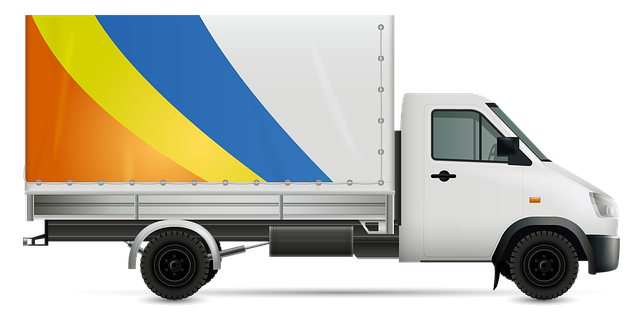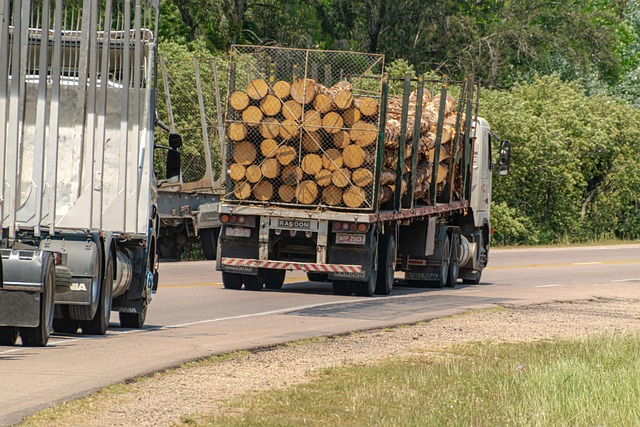Looking to register your car in California? This comprehensive guide breaks down the process step-by-step. From understanding essential requirements to navigating VIN verification, we cover everything you need to know. Gather necessary documents, choose between online or in-person registration, and learn about associated fees. By following these clear instructions, you’ll efficiently register your vehicle with minimal hassle. Don’t forget, a successful VIN verification is key!
- Understand Requirements for Car Registration in California
- Gather Necessary Documents for Vehicle Registration
- Perform VIN Verification Step-by-Step
- Choose an Appropriate Registration Method: Online or In-Person
- Pay Vehicle Registration Fees and Finalize the Process
Understand Requirements for Car Registration in California

Before registering your car in California, it’s crucial to understand the specific requirements and processes involved. One key step is ensuring your vehicle meets all safety and emissions standards set by the state. This includes a thorough inspection, often conducted through a mobile vin verifier or a certified service center, to verify the vehicle identification number (VIN) and check for any outstanding issues.
The VIN inspection plays a vital role in the registration process as it helps to track vehicle history, ensuring that all legal requirements are met. In California, this typically involves checking for recalls, damage reports, and ownership records. With a mobile vin verification service, you can streamline this process by having an expert inspect your car at your convenience, making registration smoother and faster.
Gather Necessary Documents for Vehicle Registration

Before you can register your car in California, you’ll need to gather several key documents. This process is designed to ensure the legitimacy and ownership of vehicles on the state’s roads. One critical step in this process is completing a VIN verification (Vehicle Identification Number). This unique 17-character code is located on the vehicle’s certificate of title and can also be checked through a mobile vin inspection or mobile vin verifier for added convenience.
To initiate the registration process, you’ll require your car’s registration from the previous state, a completed California Vehicle Registration application, proof of insurance, and a valid driver’s license. Additionally, you must present a signed title or a bill of sale that includes details about the vehicle’s history and any liens against it. Ensuring you have all these documents ready will streamline the registration process at your local California Department of Motor Vehicles (DMV) office.
Perform VIN Verification Step-by-Step

Performing a Vehicle Identification Number (VIN) verification is a crucial step when registering your car in California. It’s a simple process that ensures the vehicle’s history and authenticity. Here’s how to do it step-by-step:
1. Locate Your VIN: First, find the 17-character unique identifier etched on the vehicle’s chassis. It’s typically found on the driver’s side of the dashboard or under the hood.
2. Choose a Mobile Vin Verifier: In California, you can use a mobile vin verifier service to check the vehicle’s history remotely. These services allow you to input your VIN and receive detailed information about the car’s past, including accident reports, odometer readings, and previous ownership details. Some popular options include trusted mobile vin inspection apps or services.
3. Access Vehicle History: Once you’ve entered your VIN into a reliable service, it will connect to national databases to retrieve the vehicle’s history. This process is quick and typically costs around $20-$50 depending on the provider.
4. Review Results: After receiving the report, thoroughly review the information provided. Check for any discrepancies or signs of potential fraud. Ensure the mileage and accident history match what you’re expecting based on the car’s condition.
5. Proceed with Registration: If the VIN verification comes back clean, you can proceed with registering your vehicle at a California Department of Motor Vehicles (DMV) office.
Choose an Appropriate Registration Method: Online or In-Person

When registering your car in California, one of the first decisions to make is between online and in-person registration. Both methods have their advantages, but understanding the process beforehand can streamline everything for you. If you prefer the convenience of digital solutions, opting for an online registration allows you to complete most steps from the comfort of your home or office. This includes a crucial step like vin verification, which is typically done through a mobile vin inspection service.
On the other hand, visiting a DMV office in person offers more direct control and immediate feedback. A physical interaction might be preferable for those who need help navigating the process or want to ensure every detail is correct before submitting their registration. Regardless of your choice, proper documentation, including proof of ownership and identification, will be required throughout both online and in-person registration processes.
Pay Vehicle Registration Fees and Finalize the Process

After submitting your application and required documents, the next step is to pay the vehicle registration fees. These fees vary based on several factors such as the type of vehicle, its weight, and emissions standards. You can typically pay online or in person at a California Department of Motor Vehicles (DMV) office. Once the payment is processed, the DMV will issue your vehicle’s registration certificate, also known as the Registration Card. This card confirms that your car has met all legal requirements for registration, including successful vin verification.
To streamline this process, consider opting for a mobile vin inspection or mobile vin verification service. These services send a professional to your location to perform the vin check, saving you the time and effort of visiting a DMV office. This is especially convenient if you have multiple vehicles to register or are unable to visit the DMV due to scheduling conflicts or other commitments.
Registering a car in California involves understanding key requirements, gathering essential documents, and successfully completing steps like VIN verification. By following these straightforward processes – whether online or in-person – you can efficiently finalize your vehicle’s registration, ensuring compliance with state regulations. Remember, proper documentation and accurate information are crucial for a smooth registration experience.
